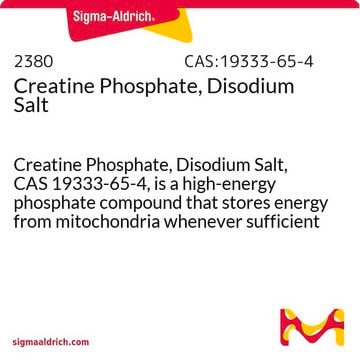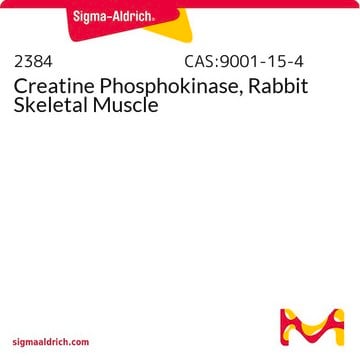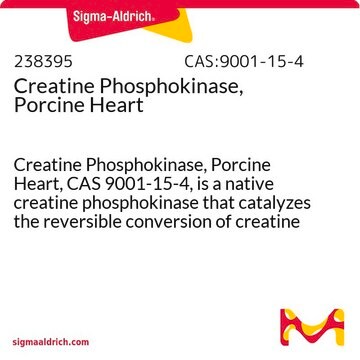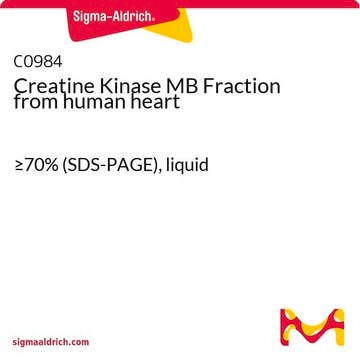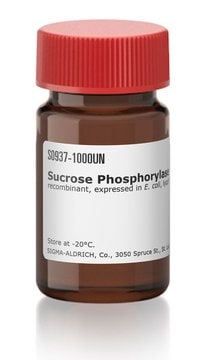C3755
Kreatinphosphokinase aus Kaninchenmuskel
Type I, salt-free, lyophilized powder, ≥150 units/mg protein
Synonym(e):
ATP: Creatin N-Phosphotransferase, CPK, Kreatinkinase, Phosphocreatin Phosphokinase
About This Item
Empfohlene Produkte
Typ
Type I
Form
salt-free, lyophilized powder
Spezifische Aktivität
≥150 units/mg protein
Mol-Gew.
80-86.2 kDa
Löslichkeit
0.25 M glycyl-glycine, pH 7.4: soluble 5.0 mg/mL, clear, colorless to slightly yellow
Fremdaktivität
ATPase ≤0.01%
Lactic dehydrogenase, hexokinase, myokinase and pyruvate kinase ≤0.001%
Versandbedingung
wet ice
Lagertemp.
−20°C
Suchen Sie nach ähnlichen Produkten? Aufrufen Leitfaden zum Produktvergleich
Anwendung
Vorsicht
Einheitendefinition
Angaben zur Herstellung
Hinweis zur Analyse
Lagerklassenschlüssel
11 - Combustible Solids
WGK
WGK 3
Flammpunkt (°F)
Not applicable
Flammpunkt (°C)
Not applicable
Persönliche Schutzausrüstung
Eyeshields, Gloves, type N95 (US)
Analysenzertifikate (COA)
Suchen Sie nach Analysenzertifikate (COA), indem Sie die Lot-/Chargennummer des Produkts eingeben. Lot- und Chargennummern sind auf dem Produktetikett hinter den Wörtern ‘Lot’ oder ‘Batch’ (Lot oder Charge) zu finden.
Besitzen Sie dieses Produkt bereits?
In der Dokumentenbibliothek finden Sie die Dokumentation zu den Produkten, die Sie kürzlich erworben haben.
Kunden haben sich ebenfalls angesehen
Unser Team von Wissenschaftlern verfügt über Erfahrung in allen Forschungsbereichen einschließlich Life Science, Materialwissenschaften, chemischer Synthese, Chromatographie, Analytik und vielen mehr..
Setzen Sie sich mit dem technischen Dienst in Verbindung.


